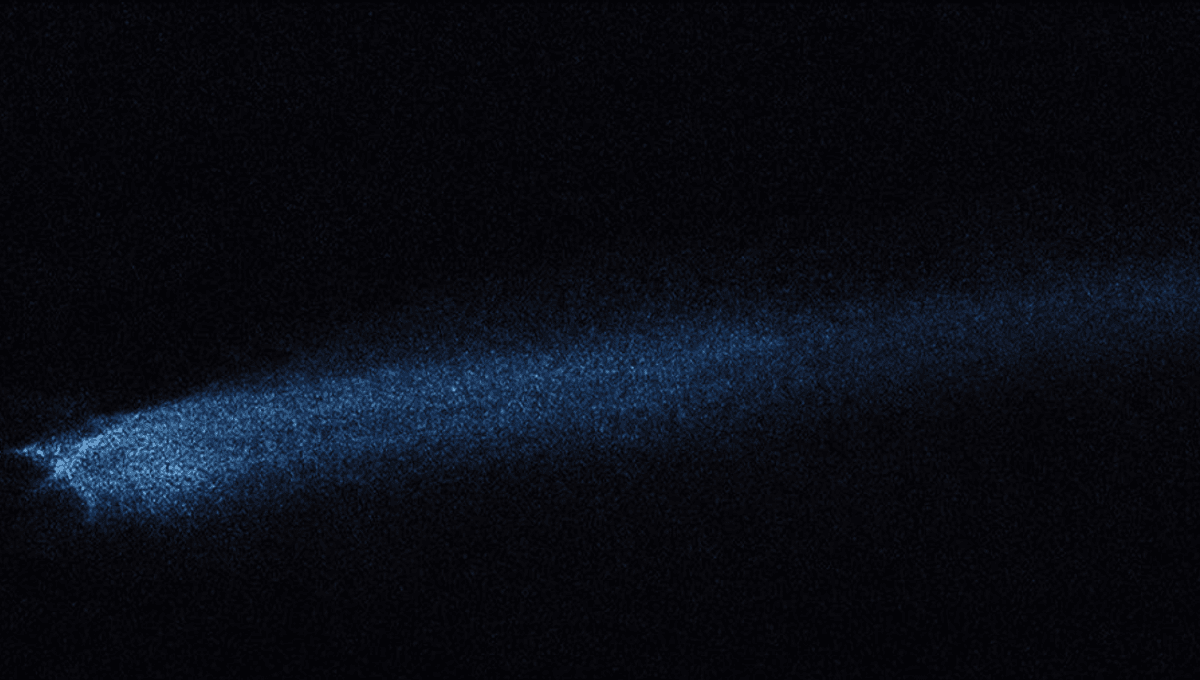
A large asteroid strike on the Moon could have negative consequences for the artificial satellites we now depend on. That being the case, a NASA-led team has looked into the options for preventing Asteroid 2024 YR4 from making such an impact in 2032. Contrary to the usual conclusions that asteroids should be diverted, not destroyed, they think this is a time for a Hollywood-approved demolition event.
When 2024 YR4 was discovered last December, it sparked headlines around the world, given the small possibility it would strike the Earth less than eight years later. As we learned more about its orbit, that chance rose to 3 percent before being downgraded. At an estimated 60 meters (200 feet) wide, this is no dinosaur-killer in size, nor probably speed, but it is large enough to do serious local damage if it struck a populated area, or unleash tsunamis in the ocean.
We now know the chance of a direct hit to Earth is essentially zero, but the chance of 2024 YR4 striking the Moon in seven years is currently 4 percent. While most people have been looking forward to the history-making once-in-5,000-years show we might all get if such an event were to occur, some spoilsports are crying “won’t somebody think of the satellites” and considering options.
An impact this large would inevitably throw up a lot of material, and with no atmosphere to constrain it, vast quantities of tiny particles would escape the low lunar gravity and spread widely. Some of this material would impact Earth’s atmosphere, creating a marvelous meteor shower lasting several days. Most of the rest would expand around the general vicinity of the Earth-Moon system, sometimes colliding later to slightly increase our ongoing meteor count.
This all sounds great until you consider all the satellites that are vulnerable to being hit by material this size, including the JWST and the International Space Station. In a pre-print paper still undergoing peer review, a team led by Brent Barbee of NASA’s Goddard Space Flight Center has looked into what can be done to minimise the danger.
Many ideas have been proposed for dealing with asteroid threats, but only one has been tested, slamming a large weight into its side to change the orbit. In most cases, planetary scientists have concluded this is the best solution, but Barbee and co-authors think 2024 YR4 is an exception.
An obvious reason is that we certainly don’t want to push the asteroid just the wrong amount so it hits Earth instead of the Moon, if not this time, then in the future. An additional factor is that scenarios for asteroid deflection usually rely on us getting there well ahead of an impact – often during a close approach before the dangerous one. We won’t have the time for that in this case.
Most crucially, to plan a deflection, you need to know the incoming object’s mass and composition. We may not know that for 2024 YR4 before we need to hit it, and certainly not in time to manufacture the spacecraft to fit the specifications.
2024 YR4 will make a close approach to Earth and the Moon in 2028. There’s no chance of an impact then on either body, but we will be able to measure the orbit precisely enough to either eliminate the risk of hitting the Moon or raise it to the point where action is required. The JWST will also attempt a detection in February 2026, which, if successful, will allow us to plot the orbit precisely two years earlier.
If the 2028 signal is go, we might just have sufficient time while the asteroid is out beyond the orbit of Mars to launch a mission to deal with it, provided the planning has been done beforehand, so, understandably, Barbee and coauthors want to get that done now.
Nevertheless, it’s all pretty tight, so the authors also consider the prospects for launching a reconnaissance mission or diverting an existing one, such as Psyche or OSIRIS-APEX, to check out 2024 YR4. An early version would tell us whether the lunar impact is a real risk before 2028, giving us more time to plan. Later options would offer more accurate measures of the size of the target before we tried to blow it up.
One question the team does not address, however, is who should pay for a mission that won’t come cheap. When the fate of the world is on the line, you’d like to think the answer would be “whoever can”, although Don’t Look Up called that into question. In this case, when the threat is to satellites, now predominantly privately more than publicly owned, the answer could get a lot more complicated.
Maybe we’ll get that meteor show after all.
The paper has been submitted to the Journal of the Astronautical Sciences and a preprint is available on the arXiv.
Source Link: Forget Saving Earth, NASA Wants Us To Save The Moon From Asteroid 2024 YR4